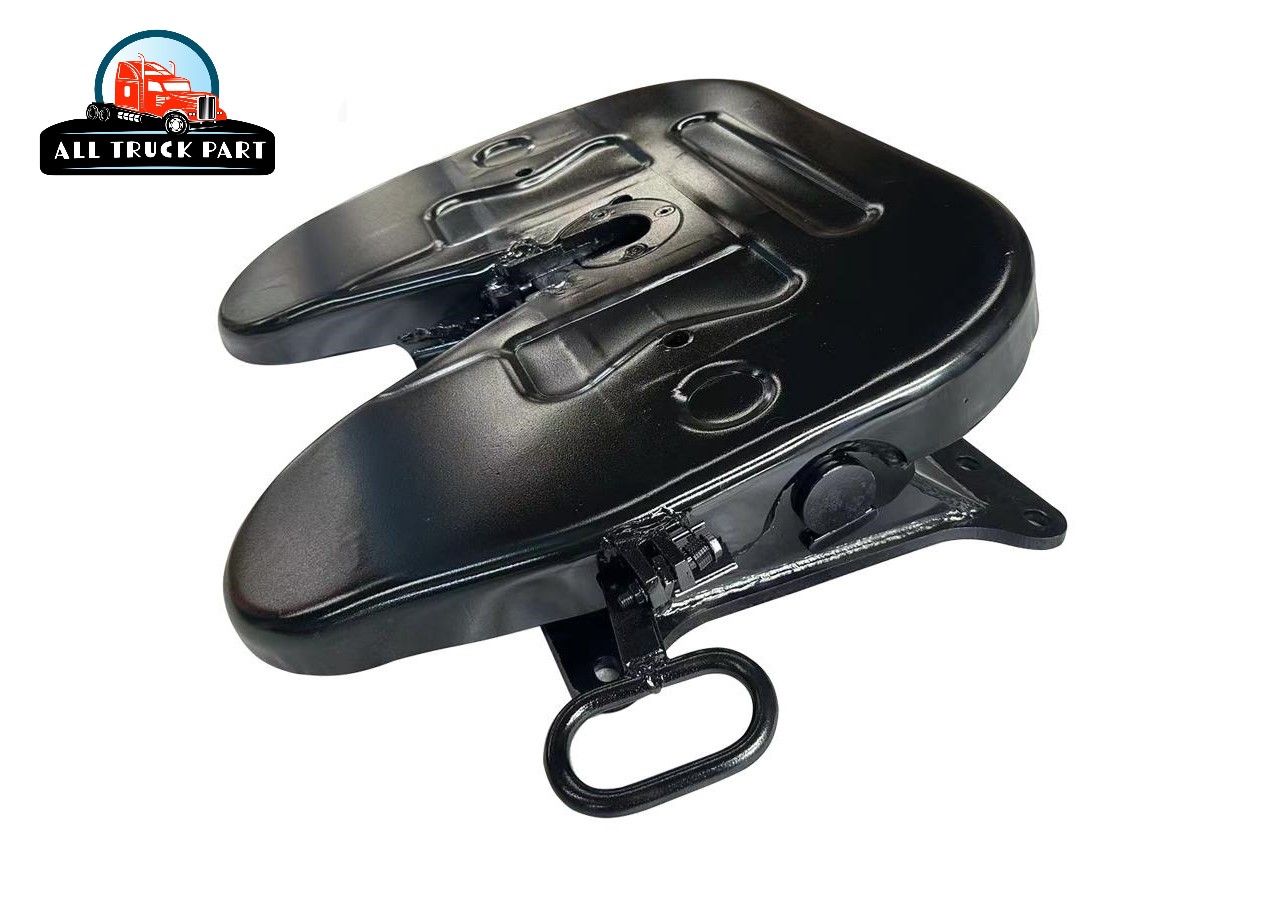
Structural Integrity and the Dangers of Driveline and Chassis Failure
Commercial transport vehicles are engineered to withstand massive payloads, yet the true test of their integrity is not static load capacity, but performance under dynamic stress. A truck hitting an unseen pothole, executing an emergency swerve, or undergoing rapid deceleration imposes violent, twisting, and directional forces that expose the slightest weakness in the chassis, suspension, and driveline. Failure in any structural component, from the fifth wheel coupling to the axles, can instantly transition a manageable road incident into a total asset loss and catastrophic risk.
The Core Role of Structural Integrity
The commercial vehicle's structural integrity is a direct function of the quality of its foundation components; when heavy duty truck parts such as suspension parts or center supports degrade, they create a systemic vulnerability that compromises safety and introduces immense financial liability. For heavy duty truck parts manufacturers, providing certified, fatigue-resistant structural components is the essential defense against this risk, ensuring the entire truck and trailer parts assembly remains intact and controllable, no matter the road condition. Fleet operators must understand the failure modes of these foundational systems to implement preventive maintenance that relies on high-quality spare parts for trucks sourced from a reputable truck parts supplier. Ignoring minor signs of metal fatigue or material degradation in the structural components is the quickest path to expensive roadside failure and dangerous structural disintegration.
Catastrophic Dangers of Driveline Disintegration
The driveline components are responsible for transferring massive rotational power from the transmission to the axles. They are subjected to relentless vibrational and torsional stress. When these components fail, the resulting mechanical violence can be total, posing an extreme hazard to the vehicle, its cargo, and surrounding traffic.
The financial and safety dangers of driveline failure include:
- Projectile Failure and Fuel Tank Rupture: Fatigued u-joints or worn center supports can cause the driveshaft to violently detach and become a projectile at high speed. This destructive event often breaches fuel tanks, igniting severe vehicle fires that result in total loss of the asset and cargo. The subsequent legal and environmental clean-up costs from a severe incident of this type are astronomical, directly impacting liability and insurance costs.
- Axle Fracture and Loss of Control: The axles bear the vertical load and handle the rotational forces. Substandard material quality or unchecked corrosion can lead to sudden axle fracture. When an axle breaks at speed, it causes immediate and total loss of lateral stability, throwing the vehicle into an uncontrollable skid or rollover, a devastating outcome for the driver and the commercial truck and trailer parts assembly.
- Differential Damage and Extended Downtime: Failure to replace minor components like worn seals or inadequate bearings allows contaminants into the differential and transmissions. The resulting internal friction and heat cause rapid, progressive damage to the gears and structure. This internal destruction necessitates a full powertrain rebuild or replacement, leading to months of unscheduled downtime and labor costs that far outstrip the expense of preventative maintenance and high-quality parts.
- Chronic Vibration and Component Fatigue: Poorly balanced wheels or worn tires, coupled with degraded u-joints, create excessive, chronic vibrational forces throughout the chassis. This constant systemic shaking accelerates material fatigue in every surrounding component, from the engine parts mounts to the cab structure, guaranteeing premature failure across the entire heavy truck & trailer parts assembly.
The Fifth Wheel Separation Hazard

The coupling of the tractor and the trailer, specifically, the fifth wheel, is the most critical structural link in any articulated vehicle. This connection must endure all dynamic forces, including braking, cornering, and the inertial push/pull of a heavy load. Failure at this point is the definition of a catastrophic event.
The severe consequences of fifth wheel and structural failure are:
- Trailer Drop and Mass Disconnection: Inadequate material or poor locking mechanism integrity in the fifth wheel can result in a trailer decoupling entirely from the tractor. A sudden trailer drop while in motion instantly puts the massive trailer assembly, which often weighing tens of thousands of pounds, into an uncontrollable trajectory, posing an immediate, lethal danger to other road users and guaranteeing total loss of both the trailer and its cargo.
- Uneven Weight Transfer and Pin Shear: Poor maintenance or using non-certified truck parts supplier components can lead to excessive play and vertical movement in the coupling. Under extreme braking or rapid acceleration, this movement can cause the kingpin to shear, creating the same catastrophic disconnection hazard. The resulting legal and regulatory scrutiny regarding maintenance logs and component certification will impose massive punitive financial penalties on the fleet.
- Brake System Severance: The coupling point contains the vital air & electric coils that supply pneumatic power to the trailer brakes. A partial separation or excessive structural movement can rip these lines, causing an instant, uncompensated pressure drop and the immediate loss of trailer braking capability. The tractor must then attempt to stop the combined mass alone, guaranteeing extreme stopping distances and usually leading to a collision.
- Chassis Cracking and Structural Collapse: Structural components like the frame rails or body parts are only as strong as their weakest fastening point. Worn or loose hardware kits or degraded metal in the center supports create stress risers. Under dynamic load, these weak points propagate into major chassis cracks, eventually leading to structural collapse or severe misalignment that necessitates scrapping the entire unit.
Mitigation and Prevention Through Quality Components
Preventing the dynamic load catastrophe requires a shift from reactive repair to proactive component replacement based on certified quality and predictable longevity. The initial cost savings from using lower quality spare parts for trucks are negligible compared to the financial devastation of a single structural failure.
The necessary steps for prevention involve:
- Certified Axle and Bearing Replacement: Using axles and bearings that meet or exceed OEM specifications is foundational. Scheduled replacement intervals for bearings and comprehensive, non-destructive testing for axle integrity are essential. Components must be sourced from a truck parts specialist who can guarantee material composition and manufacturing consistency.
- Regular Fifth Wheel Inspections: Routine inspection of the fifth wheel locking mechanism, wear plate, and mounting integrity is mandatory. Immediate replacement of worn or fatigued components, using only high-grade hardware kits, ensures that the most critical structural link can withstand peak dynamic forces without compromise.
- Suspension Overhaul with Quality Parts: Degraded suspension parts (including bushings, mounts, and springs) must be replaced using high-tensile strength materials to maintain correct vehicle geometry. This ensures weight distribution remains optimal, preventing premature wear on tires and minimizing the risk of rollovers during emergency maneuvers.
- Integrated Wheel End Quality: Wheels and tires must be consistently balanced and inspected for micro-cracks or damage. Using certified wheels and properly rated tires from a single truck parts supplier ensures component compatibility, reducing vibrational stress on the hubs, brake drums, and brake discs.
Engineered for Structural Reliance: All Truck Parts
The defense against catastrophic structural failure lies in manufacturing quality and component consistency. All Truck Parts Limited (ATP) serves as a specialized heavy duty truck parts manufacturers that prioritizes the structural integrity of every truck trailer parts and chassis component they supply. With deep expertise spanning over two decades, ATP is committed to technical excellence and providing robust, predictable solutions for the most stressed systems in the transport industry.
ATP’s manufacturing operations are anchored by stringent quality control and advanced engineering teams. Their capability for Customized Design and OEM/ODM Services is utilized by major brands seeking highly specific, load-bearing parts. This internal technical strength guarantees that structural components, unlike those from unverified sources, meet precise material specifications required to endure chronic fatigue and sudden dynamic load spikes. ATP is positioned to simplify the supply chain for complex, stressed assemblies by offering:
- Load-Bearing Portfolio: ATP provides a comprehensive range of structural essentials, including certified axles, durable fifth wheel assemblies, replacement suspension parts, reliable center supports, and high-grade wheels and tires. Their inventory is specifically curated to assure integrity at every stress point in the heavy truck and trailer parts structure.
- Manufacturing Standards: Maintaining ISO/TS16949 certification is a core mission, confirming ATP's rigorous quality management and environmental responsibility across its vast operations. This certification provides fleet managers with the assurance that structural components are produced with consistency and a focus on long-term durability, minimizing the risk of early failure.
- Customer-Centric Value: ATP maintains factory direct prices, ensuring that fleets can afford to prioritize quality without compromising their budget. Every sale of all truck and trailer parts is backed by a standard 12-month warranty, reinforcing ATP's confidence in the endurance of its products and its commitment to dedicated customer support.
Conclusion
The vulnerability of a commercial fleet is most acute when subjected to the unpredictable forces of dynamic road conditions. Failure of major structural systems, such as the driveline, fifth wheel, or axles, does not merely cause downtime; it results in severe asset loss, high-stakes liability exposure, and potential loss of life. Preventing the dynamic load catastrophe requires a proactive strategy built on sourcing certified, stress-tested components. By partnering with All Truck Parts, a dedicated truck parts specialist, fleet operators secure access to an assured inventory of all trucks parts and structural solutions engineered to prevent catastrophic failure, control escalating insurance costs, and maintain the maximum operational lifespan of their assets. Investing in the structural resilience provided by quality heavy duty truck parts manufacturers is the single most effective way to safeguard the fleet's viability and ensure safety on the highway.




